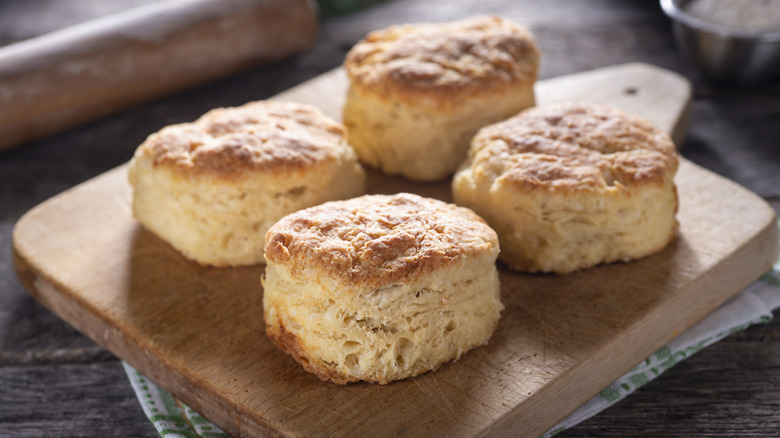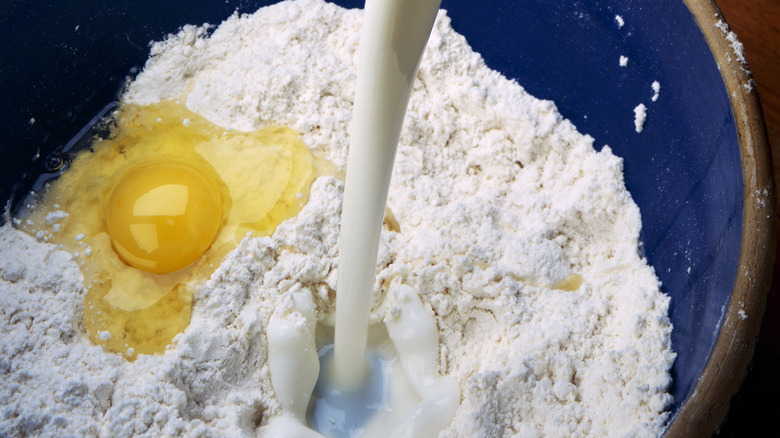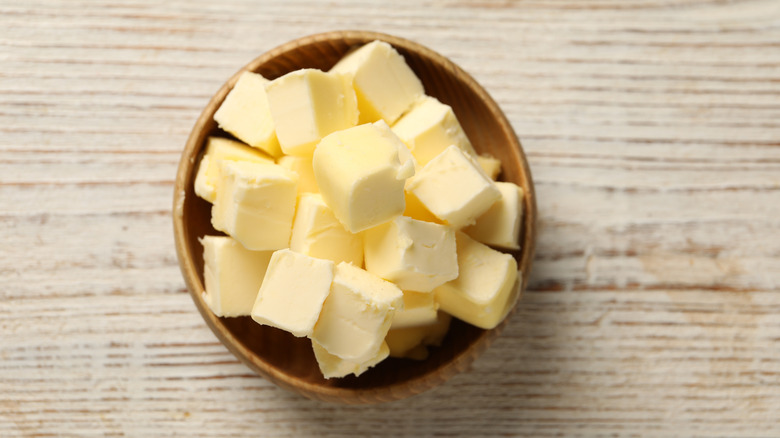Why Is Buttermilk So Crucial When Making Biscuits?
Within the pantheon of beloved all-American baked goods, few stand quite as tall (and are quite as beloved) as a simple biscuit. Soft, flaky, delicious when buttered, slathered with jam, or even covered in sausage gravy — they're a workhorse of diners and home kitchens alike, and they are, invariably, delicious. But one crucial ingredient is the secret to truly great biscuits: buttermilk. This fatty, tangy liquid gold is so much more than just a byproduct of making butter — it's right at the heart of many of the best-known dishes in American cookery, from homemade ranch dressing to fluffy, red velvet pancakes. But why is it quite so important when making biscuits?
To find out, Food Republic asked Michelle Wallace, owner and founder of B'tween Sandwich Co. "Buttermilk is so great and important because it provides enough fat to create flavor and moisture and has enough acidity to help make the biscuit dough rise," she told us.
That acidity not only helps the biscuits grow nice and tall, creating air pockets inside that give that characteristic tenderness that you're after, but it also adds a subtle complexity to their eventual flavor. That acidity also works to break down the gluten found in flour, which makes for an improved, fluffy texture while not compromising the biscuits' structural integrity.
What to do if you don't have any buttermilk on hand
While buttermilk is great, and a surprisingly versatile ingredient, it's not necessarily something that you're going to have a constant supply of in your fridge. If you find yourself with a craving for biscuits and none on hand, though, don't lose hope — there are a number of DIY solutions using pantry staples you're very likely to have at home!
The simplest of these is to combine regular whole milk with an acid — vinegar will give the best results. "[M]ilk and vinegar is a suitable substitute for buttermilk," Wallace told us. "Any vinegar would work, but using distilled white vinegar will yield a neutral flavor." That makes it "great to use when you don't want to impart any other flavors to your buttermilk," she said.
But what about if you've only got apple cider vinegar to hand? Fear not! Though the type of vinegar you use might subtly alter the taste of your biscuits, it won't do anything drastic. According to Wallace, "When using vinegar, the two most common vinegars to use are distilled white vinegar and apple cider vinegar. Using white vinegar will make your final buttermilk nicely balanced with that acidic punch but also neutral in flavor." So while an apple cider vinegar may leave your biscuits with a slight fruity note, you likely won't notice it too much.
Another key factor to consider is temperature
While buttermilk is a great addition to improve the texture of your biscuits, it's not the only factor at play. Temperature plays a crucial role –- and not just the temperature of your oven! Chilling your ingredients — especially your fats — before mixing them can be a game changer. "Cold butter (or whatever fat you are using) is the answer to getting a perfectly flaky texture to your biscuit," said Wallace.
When it comes to incorporating that chilled butter, things couldn't be easier: "There are many popular hacks that you can use; however, I like how grandma taught me ... use your hands to cut the butter in." To keep things cool, don't be afraid of putting your dough in the fridge. "I also rest my biscuits for about 5 to 10 minutes in the fridge before baking. Just to ensure that the butter that has been worked in is cold."



